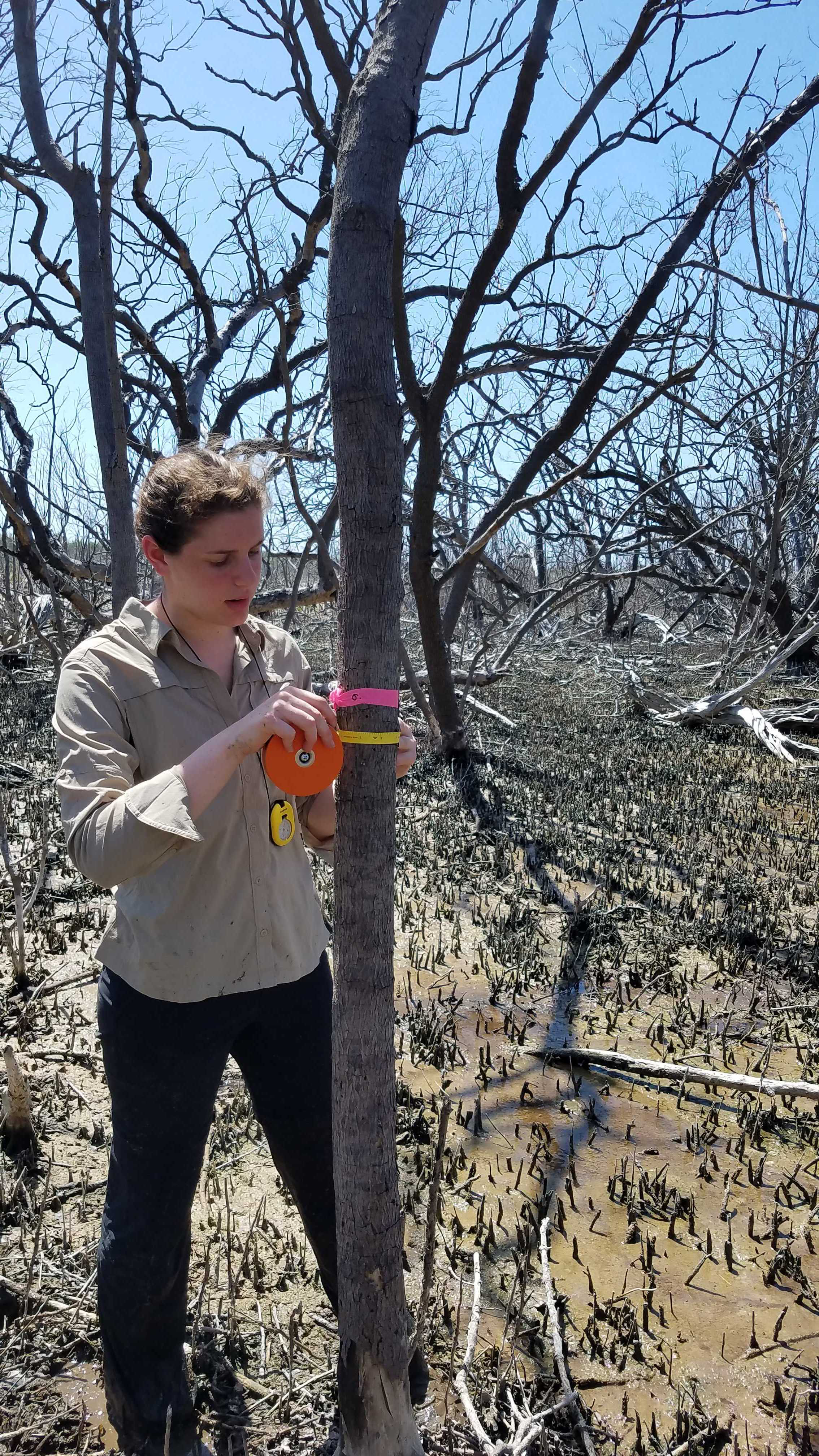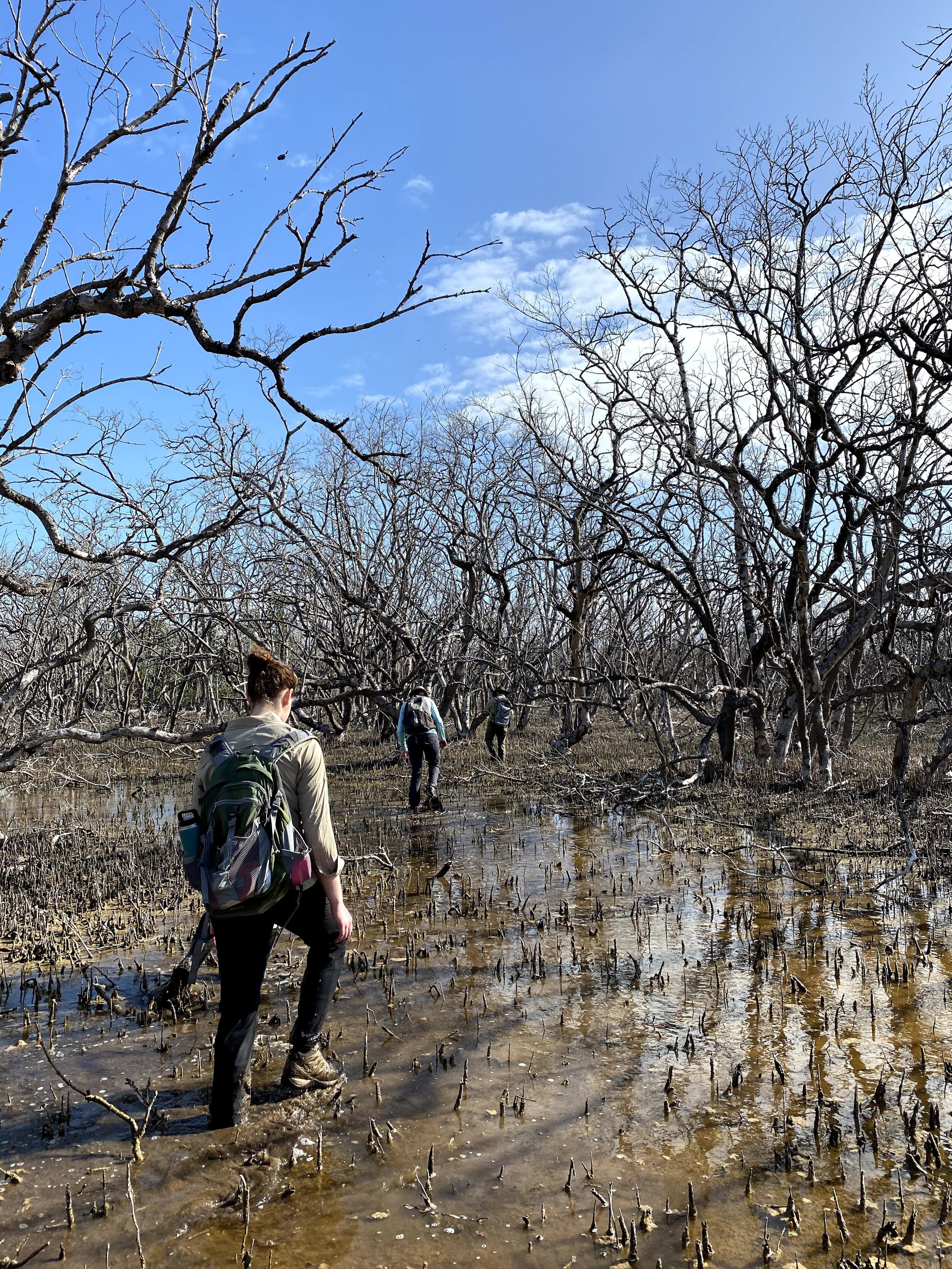Liza Goldberg: A Scientist Fighting Climate Change at the Intersection of Earth Science and AI
Not many can say that they assisted NASA as a teenager. Liza Goldberg’s work caught the eye of a NASA scientist at the mere age of 14, and since then, her love for Earth science and environmental studies has only grown. As an advocate for climate justice, Liza currently works with NASA to complete global scale research projects pertaining to the causes and effects of climate change, such as investigating the factors contributing to mangrove tree loss. She is also introducing her own platform, Cloud to Classroom, into K-12 curriculums across the country, hoping to bolster youth engagement with climate change in an interactive manner.
While in high school, Liza began working as an intern at NASA after being approached by a science fair judge who was intrigued by her project. Working with professional scientists much older than her, Liza knew that there was a lot for her to learn. Initially, she admits, she was somewhat overwhelmed by her new environment. “When I first started at NASA, it was very intimidating,” she recalls, “I was really starting at absolute ground zero. I didn’t know what a satellite was! I really had very little coding experience. Walking into a place where everyone around you is such an absolute expert in their field… was definitely a challenge as a 14-year-old girl.” The challenges encouraged Liza to devote herself further to her research and work, “When I came in, I didn’t really understand the scope of the field that I was just getting into. I was just taking it one step at a time, sort of teaching myself what I needed to move forward...”
At NASA, Liza found mentors that encouraged her to pursue the research she was interested in. She reflects, “I think their influence on my work really can’t be overstated. It’s really important for girls in particular to have a group of people in their life, or even a single person, who is willing to overlook your age or your gender or any other barrier you may have, and just see you for your passions and what you want to do. And that was absolutely the case when I started at NASA.”
Liza wishes that girls everywhere had people to encourage them to discover their love for and potential in STEM, especially given the stresses that come with entering a male-dominated field. She emphasizes the importance of a support system and how uplifting it is to be surrounded by other powerful women in STEM. “The saying ‘You can’t be what you can’t see’ really holds true in a lot of circumstances,” Liza says. “Especially as a scientist, I think I was really lucky to have a mentor who was a woman. Being able to look up to her and see her strengths—and in terms of going into meetings, how she was standing up to all of these other men and giving these incredible talks—is really empowering. Once you see that, you can kind of put yourself in their shoes and say, ‘One day that can be me.’” Liza hopes to serve as a role model for young girls everywhere who wish to pursue research. “I would really hope that girls, really at any age, are able to see my work and the work of so many other incredible women who have come before me, and say, ‘If they can do it, so can I. Who’s to say that I can’t, regardless of the number of men in the room?’”
“It’s really important for girls in particular to have a group of people in their life, or even a single person, who is willing to overlook your age or your gender or any other barrier you may have, and just see you for your passions and what you want to do.”
Finding the confidence to speak up in research meetings was not easy. Liza recounts, “The imposter syndrome was quite striking. Walking into these conference rooms and giving talks in front of these people… it’s difficult to understand that your research has value, in light of all the incredible research that people are doing around you.” But Liza notes that even simply raising your hand or making an observation can be meaningful, since every contribution matters.
Most recently, Liza is developing Cloud to Classroom, a platform that introduces K-12 students to the effects of environmental pollution and climate change. Cloud to Classroom incorporates real satellite images and tools, such as Google Earth Engine, that allow students to visualize and better understand climate change. The idea for using satellite imagery for this public educational platform came from Liza’s own research experience. “I was doing all these global-scale analyses, in terms of using satellite imagery, and I found that it was just really changing my perspective on my place in the world and on climate change in the world as a whole.” She found that using satellite imagery was a way to make understanding climate change more accessible to the general public, as “you don’t need to be a scientist, you don’t need to know how to code.”
By embedding this interactive visual-based experience into Cloud to Classroom, Liza hopes to approach climate change education differently from the learning methods of a traditional classroom. “In school, they would try and teach us things like climate change, but they would do it using textbooks and statistics,” Liza remembers. “I felt that myself and a lot of other kids in my classes just simply were not compelled by what we were seeing, just because simply seeing these numbers doesn’t really tell the whole story.”
Liza continues, “When you hear about temperatures rising across the world, you say, that’s awful, but I don’t understand how that’s going to tangibly impact me or my neighbors or another population across the world. So my hope with Cloud to Classroom is that we can take these global scale statistics on climate change and contextualize them in terms of the human side of things.”
From talking with her peers and seeing posts on social media, Liza describes what she believes to be a problem with the mindset many adopt as a supposedly necessary step to fighting climate change: the need to have a complete lifestyle change. “There is this misconception that in order to fight climate change, we have to go to extremes,” Liza elaborates, “That on the individual level, every single one of us has to do every single thing constantly throughout the day to be tackling climate change, whether that’s recycling everything or taking shorter showers. And all of those things are so important, I don’t want to minimize that at all, but I think to a certain extent when there’s such an emphasis on a militant style, it turns a lot of people off.” Young people, in particular, often feel as though they, alone, cannot make a globally significant impact. Liza hopes to reverse this sentiment by promoting smaller steps, “If we emphasize to the public that anything you can do can make a difference, whether it’s, you know, maybe you take one shorter shower, but you’re not able to recycle this thing, then it’s okay, the world is not going to end. Decreasing the level of stress on doing everything perfectly is really important in terms of fueling the climate change movement more and making it into something that’s actually attainable rather than something that’s just for the select few.” To young people who might feel as though only national policymakers have the power to make a meaningful difference, Liza stresses that local change is so important, “Some of the biggest impacts we can make are actually on the food and agriculture side of things, so even things like school gardens, harvesting sustainably on the local scale… those projects can be really fun to implement. They bring the community together.”
“When you hear about temperatures rising across the world, you say, that’s awful, but I don’t understand how that’s going to tangibly impact me or my neighbors or another population across the world. So my hope with Cloud to Classroom is that we can take these global scale statistics on climate change and contextualize them in terms of the human side of things.”
While stories about climate change have become more frequent in the media, Liza wishes that more attention was directed towards the issue. She draws a comparison specifically with the amount of news coverage present throughout the COVID-19 crisis and the much lesser amount devoted to the impending climate crisis. She posits, “Imagine if the press devoted that level of energy towards climate change, I mean, what an enormous difference could we possibly make? I think seeing that has been a little frustrating for me, to be honest, because now we know what’s possible in terms of when the entire world focuses on one issue.” Liza continues, “Obviously, it’s a bit unrealistic to think that climate change is going to receive the same amount of media attention as a global crisis like COVID can, but I do think that the media should focus on these more tangible, individual stories and not just these main headlines of, ‘This is going to be how much the temperature rises.’ Switch those headlines to ‘Here is how this particular community is going to be impacted.’ I think that’s where we can make a really big difference.” Her solution is not to change the amount of news focused on climate change, but the approach in telling these stories. Upon shifting to a more personal, emotional demonstration of climate change, she hopes that others will be more driven to act.
Today, Liza is not only a researcher at NASA but a first-year student at Stanford University. Liza will be furthering her studies in Earth science and diving into more coding through a minor in computer science. She shares, “At Stanford, I’m going further down the computer science and AI track than I ever have before. I actually came into Stanford thinking I would go very heavily down the ecology or Earth systems track, but I took a CS class my first quarter here, and really really fell in love with it. And what I also realized is that my interests don’t just fall within the realm of Earth systems, but I also love the humanities sides of things… and all of these issues are very interlinked.” Through her studies, Liza hopes to combine climate research with computer science and the humanities to continue advocating for action against climate change.
STORY ISHITA SHAH
PHOTOS LIZA GOLDBERG



